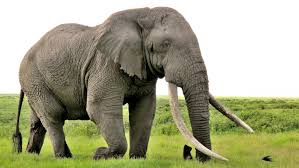Elephant
Elephant
 |
| Add caption |
Elephants are substantial well evolved creatures of the family Elephantidae and the request Proboscidea. Three species are perceived, the African bramble elephant (Loxodonta africana), the African woods elephant (L. cyclotis), and the Asian elephant (Elephas maximus). Elephants are scattered all through sub-Saharan Africa, South Asia, and Southeast Asia. Elephantidae is the main surviving group of the request Proboscidea; other, now wiped out, individuals from the request incorporate deinotheres, gomphotheres, mammoths, and mastodons.
Male African elephants are the biggest surviving earthly creatures and can achieve a tallness of 4 m (13 ft) and weigh 7,000 kg (15,000 lb). All elephants have a few unmistakable components, the most outstanding of which is a long trunk or proboscis, utilized for some reasons, especially breathing, lifting water, and getting a handle on articles. Their incisors develop into tusks, which can fill in as weapons and as devices for moving articles and burrowing. Elephants' expansive ear folds help to control their body temperature. Their column like legs can convey their incredible weight. African elephants have bigger ears and inward backs while Asian elephants have littler ears and curved or level backs.
Elephants are herbivorous and can be found in various natural surroundings including savannahs, timberlands, deserts, and swamps. They like to remain close water. They are thought to be cornerstone species because of their effect on their surroundings. Different creatures tend to stay away from elephants while predators, for example, lions, tigers, hyenas, and wild canines, as a rule target just youthful elephants (or "calves"). Females ("dairy animals") have a tendency to live in family bunches, which can comprise of one female with her calves or a few related females with posterity.
The gatherings are driven by an individual known as the female authority, regularly the most seasoned bovine. Elephants have a fission–fusion society in which various family bunches meet up to mingle. Guys ("bulls") leave their family bunches when they achieve pubescence and may live alone or with different guys. Grown-up bulls generally cooperate with family bunches when searching for a mate and enter a condition of expanded testosterone and hostility known as musth, which helps them pick up predominance and conceptive achievement. Calves are the focal point of consideration in their family bunches and depend on their moms for whatever length of time that three years. Elephants can satisfy 70 years in nature. They impart by touch, sight, smell, and sound; elephants utilize infrasound,[1]




